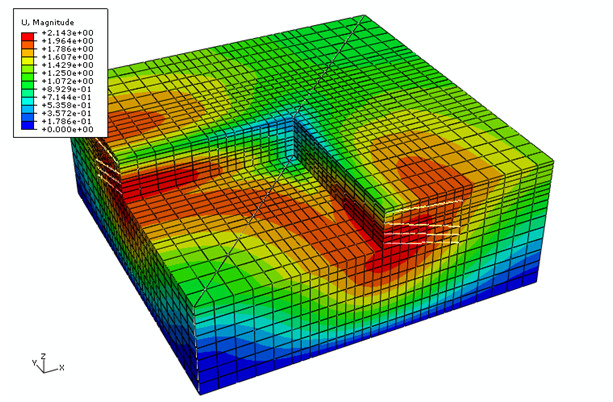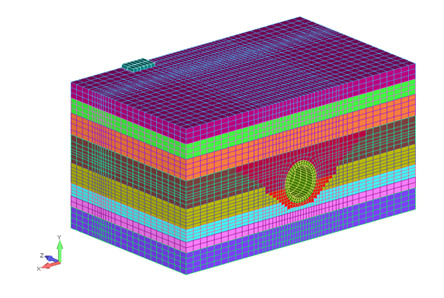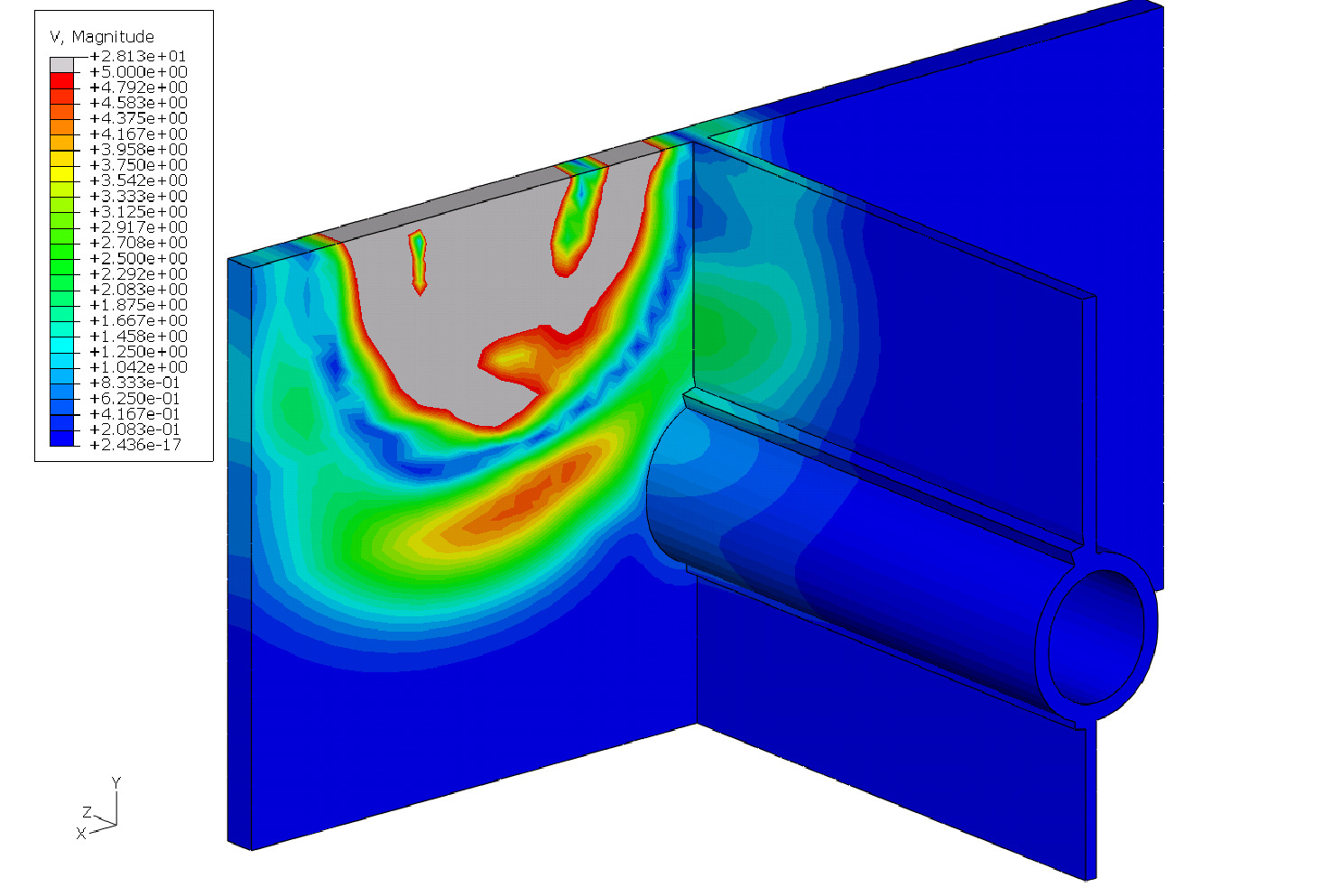Allston, MA
Harvard University Science Complex, MWRA Sewer
Scope/Solutions
Harvard University planned to locate a new science complex above a Massachusetts Water Resources Authority (MWRA) brick masonry pipeline that was over 115 years old. The University was concerned about the impact of construction on the 69 in. high by 62 in. wide active masonry sewer. SGH studied the potential effects of ground displacement that can distort and increase soil loads on buried structures, construction traffic live loads, surface vibrations, and impacts from falling objects.
Highlights of SGH’s work to assess pipeline response to construction-induced vibration and movement include the following:
- Examined the sequences of both Boston blue clay excavation and installation and tensioning of a tie-back system
- Used ABACUS Explicit to develop three-dimensional soil-structure interaction models
- Analyzed stress-wave propagation through the soil
- Assessed the extent of ground displacement
- Modeled construction of the slurry wall adjacent to the pipe using nonlinear finite-element soil-structure interaction analysis
- Used different nonlinear soil models, such as Mohr-Coulomb in ABAQUS, to simulate the soil layers, buried and above-grade structures, and construction processes
- Collaborated with the owner, contractor, and other consultants, enabling Harvard to proceed with the project without endangering the pipeline
To minimize impact, the design of the four-building research complex wraps around the pipeline.
Project Summary
Solutions
Repair & Rehabilitation
Services
Advanced Analysis
Markets
Infrastructure & Transportation
Client(s)
Sea Consultants, Inc.
Specialized Capabilities
Buried Infrastructure | Computational Mechanics
Key team members


Additional Projects
Northeast
Development of Locomotive Crashworthy Components
Train collisions involving locomotives can result in serious damage and occupant injury due to the larger size and stiffness of the locomotive. SGH assisted TIAX, LLC and the Volpe Center with designing a crash energy management system for a locomotive along with material and component testing.
Northeast
Dedham Place at 3 Allied Drive Parking Garages
SGH assessed the condition of the aging parking structures and designed repairs to extend their useful life.


